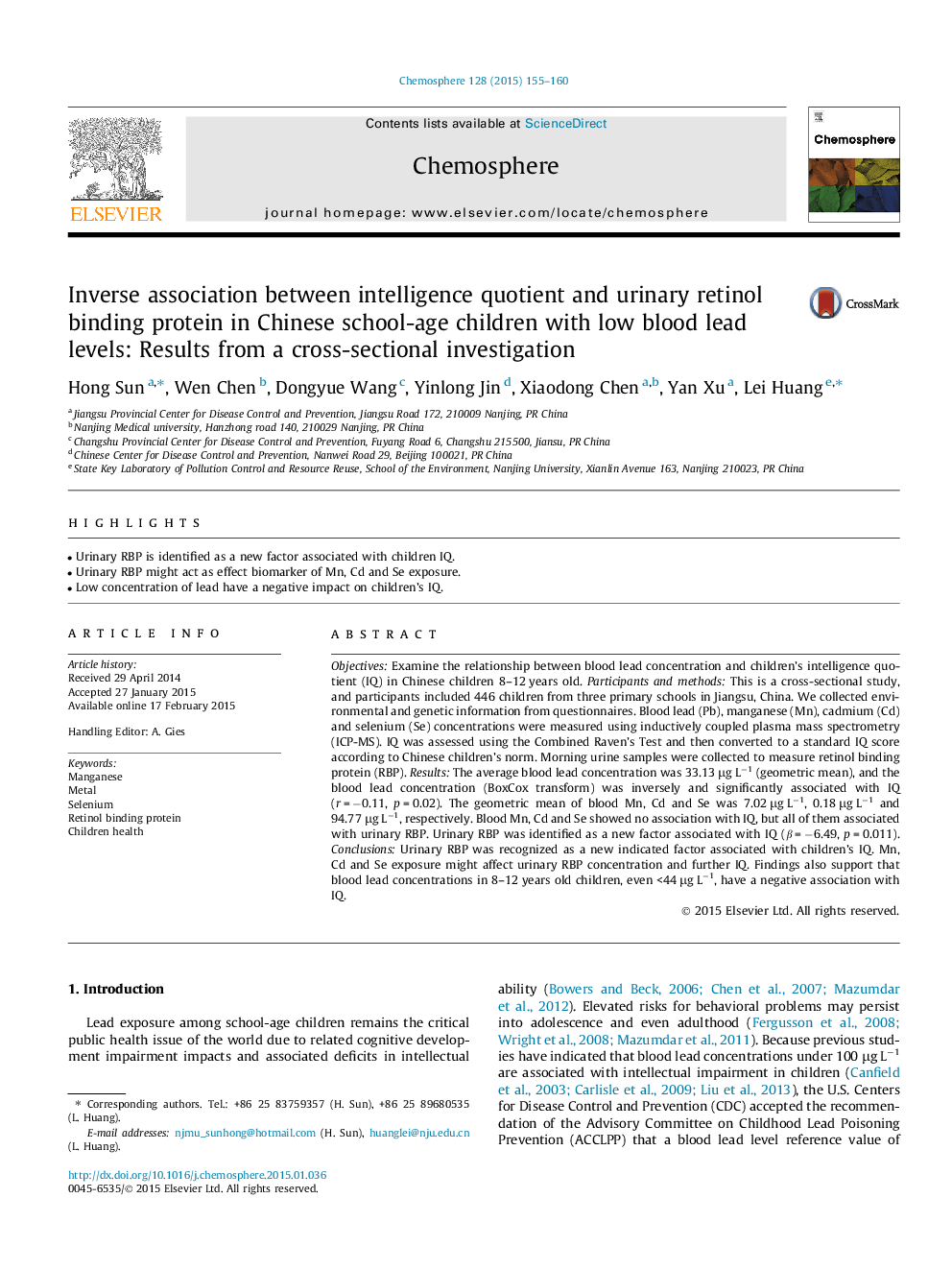| Article ID | Journal | Published Year | Pages | File Type |
|---|---|---|---|---|
| 4408484 | Chemosphere | 2015 | 6 Pages |
•Urinary RBP is identified as a new factor associated with children IQ.•Urinary RBP might act as effect biomarker of Mn, Cd and Se exposure.•Low concentration of lead have a negative impact on children’s IQ.
Objectives: Examine the relationship between blood lead concentration and children’s intelligence quotient (IQ) in Chinese children 8–12 years old. Participants and methods: This is a cross-sectional study, and participants included 446 children from three primary schools in Jiangsu, China. We collected environmental and genetic information from questionnaires. Blood lead (Pb), manganese (Mn), cadmium (Cd) and selenium (Se) concentrations were measured using inductively coupled plasma mass spectrometry (ICP-MS). IQ was assessed using the Combined Raven’s Test and then converted to a standard IQ score according to Chinese children’s norm. Morning urine samples were collected to measure retinol binding protein (RBP). Results: The average blood lead concentration was 33.13 μg L−1 (geometric mean), and the blood lead concentration (BoxCox transform) was inversely and significantly associated with IQ (r = −0.11, p = 0.02). The geometric mean of blood Mn, Cd and Se was 7.02 μg L−1, 0.18 μg L−1 and 94.77 μg L−1, respectively. Blood Mn, Cd and Se showed no association with IQ, but all of them associated with urinary RBP. Urinary RBP was identified as a new factor associated with IQ (β = −6.49, p = 0.011). Conclusions: Urinary RBP was recognized as a new indicated factor associated with children’s IQ. Mn, Cd and Se exposure might affect urinary RBP concentration and further IQ. Findings also support that blood lead concentrations in 8–12 years old children, even <44 μg L−1, have a negative association with IQ.
